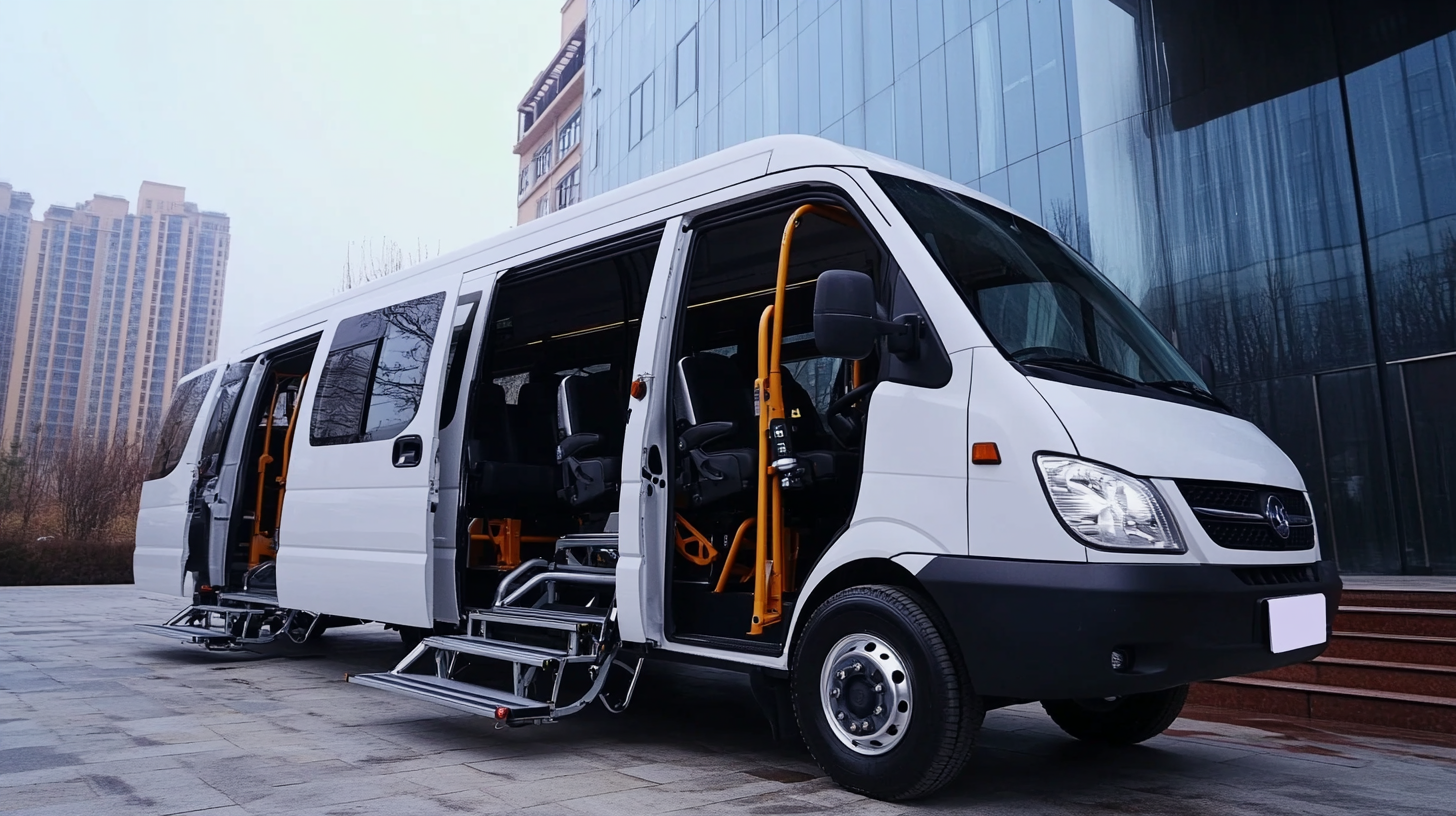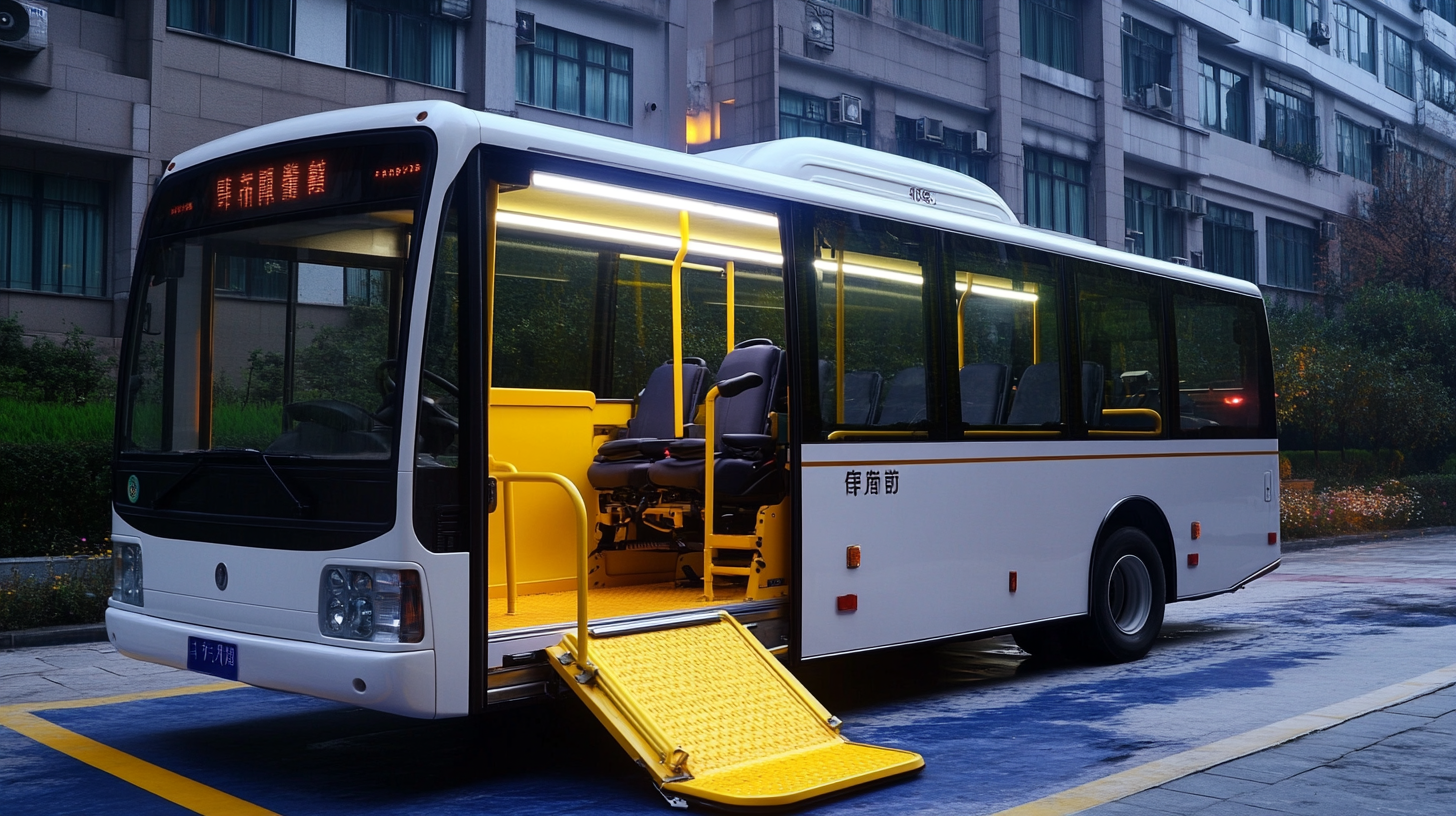China Made Accessible Vehicles for Everyone Trustworthy Quality for Global Sharing
As the global demand for mobility solutions continues to rise, the significance of
Handicap Accessible Vehicles (HAVs) has never been more pronounced.
According to a report from the World Health Organization, over one billion people worldwide experience some form of disability,
underscoring the urgent need for innovative transportation options that cater to their needs.
In China, the development of high-quality, accessible vehicles is not just a response to domestic demand but a commitment to global inclusivity.
Recent industry analyses indicate that the market for HAVs is projected to grow significantly, propelled by advancements in technology and increased awareness of accessibility issues.
Chinese manufacturers are stepping up to the challenge, providing vehicles that prioritize both functionality and reliability, enabling universal access to transportation.
As we explore the solutions available in this sphere, we aim to highlight the
quality and trustworthiness of these innovative vehicles designed for everyone.

China's Commitment to Accessible Vehicles: Market Trends and Innovations
In recent years, China's vehicle manufacturing industry has seen a significant shift towards producing accessible vehicles, marking a notable commitment to inclusivity. According to a recent report by the International Organization of Motor Vehicle Manufacturers, the global market for accessible vehicles is expected to grow at a rate of 6% annually, reaching a valuation of over $48 billion by 2025. This trend underscores the demand for vehicles that cater to individuals with disabilities and the elderly, necessitating innovation in design and technology. China's strategic investments in research and development aim to create vehicles that integrate smart technologies, enhancing safety and comfort for all users.
Tip: When considering an accessible vehicle, look for features such as adjustable seat heights, easy entry and exit options, and advanced driver-assistance systems that support a variety of needs.
Moreover, the Chinese government has implemented policies to promote accessible transportation, including favorable regulations for small and medium enterprises involved in manufacturing accessible vehicles. The 2021 China Accessible Transportation Annual Report indicates that policies aimed at enhancing public transport accessibility have increased accessible vehicle production by over 30% in the past two years. Manufacturers are focusing on integrating eco-friendly technologies, ensuring that these vehicles not only serve a social purpose but also contribute to sustainability.
Tip: Always check for certifications and quality standards that guarantee your vehicle meets the required safety and accessibility guidelines.
Market Trends in Accessible Vehicles
This chart illustrates the growing market share of accessible vehicles from 2018 to 2023, showcasing the increasing demand for inclusive transportation solutions globally.
Assessing the Global Demand for Accessible Vehicles: Statistics and Projections
As the global demand for accessible vehicles increases, there’s a noteworthy growth trend in the light commercial vehicle (LCV) market, projected to rise from a value of $521.23 billion in 2023 to approximately $815.55 billion by 2032. This represents a compound annual growth rate of 5.1% during the forecast period from 2024 to 2032. Such growth is driven by economic development and the increasing need for versatile transportation solutions that cater to diverse populations, including those requiring accessible vehicles.
Tips for manufacturers include prioritizing quality and reliability in vehicle design, as these factors will significantly impact consumer trust and adoption rates. Additionally, investing in market research can aid companies in identifying the specific needs of disabled and elderly individuals, ensuring that products are tailored to meet their expectations. Finally, collaboration with local governments and NGOs can facilitate broader distribution channels and enhance the visibility of these vehicles.
Furthermore, with the burgeoning electric vehicle market showing significant potential, manufacturers should consider integrating advanced electric drivetrains into their accessible vehicles. This move not only aligns with the global shift towards sustainability but also addresses the rising demand for environmentally friendly transportation options among consumers. Adapting to these trends will be crucial for tapping into the expanding market for accessible vehicles worldwide.
China Made Accessible Vehicles for Everyone Trustworthy Quality for Global Sharing - Assessing the Global Demand for Accessible Vehicles: Statistics and Projections
| Region |
Current Demand (Units) |
Projected Demand (2025) (Units) |
Growth Rate (2023-2025) (%) |
Accessibility Index (1-10) |
| North America |
150,000 |
200,000 |
33.33 |
8 |
| Europe |
120,000 |
170,000 |
41.67 |
9 |
| Asia-Pacific |
80,000 |
130,000 |
62.50 |
7 |
| Latin America |
50,000 |
75,000 |
50.00 |
6 |
| Middle East & Africa |
30,000 |
50,000 |
66.67 |
5 |
Technological Advances in Vehicle Accessibility: Key Innovations for 2025
The landscape of vehicle accessibility is evolving rapidly, with China emerging as a prominent player in 2025. Thanks to significant investments in innovation, Chinese manufacturers are developing advanced technologies that focus on making vehicles more accessible for everyone. This includes innovations such as adjustable seating, user-friendly controls, and enhanced navigation systems designed to cater to diverse mobility needs. Such developments not only represent a leap in automotive design but also demonstrate China’s commitment to inclusive transport solutions that can resonate on a global scale.
As we look toward the future of automotive technology, we see an increasing emphasis on integrating AI and robotics to enhance user experience. The advancements in materials, combined with smart tech for interaction between the driver and the vehicle, are set to reshape our understanding of mobility. Enhanced safety features and intuitive interfaces promise to make driving not just more accessible, but also safer and more enjoyable. With these transformative technologies, the automotive industry is not just responding to current demands but is setting a new standard for what the future of transportation should look like.

Quality Control in China's Accessible Vehicle Manufacturing: Ensuring Trustworthiness
 In recent years, China's manufacturing sector has taken significant strides in producing accessible vehicles, focusing on quality control to ensure that these vehicles meet international standards. According to a recent report by the China Association of Automobile Manufacturers (CAAM), the number of accessible vehicles produced in China has increased by over 30% in the last two years, reflecting the growing demand for mobility solutions for all individuals, including those with disabilities. This upward trend is backed by rigorous quality assurance protocols that manufacturers implement to uphold standards, ranging from safety tests to materials certification.
In recent years, China's manufacturing sector has taken significant strides in producing accessible vehicles, focusing on quality control to ensure that these vehicles meet international standards. According to a recent report by the China Association of Automobile Manufacturers (CAAM), the number of accessible vehicles produced in China has increased by over 30% in the last two years, reflecting the growing demand for mobility solutions for all individuals, including those with disabilities. This upward trend is backed by rigorous quality assurance protocols that manufacturers implement to uphold standards, ranging from safety tests to materials certification.
To maintain trustworthiness in their products, many Chinese manufacturing plants have adopted ISO 9001, a global standard for quality management systems. This commitment to quality not only ensures that the vehicles are safer and more reliable but also enhances their competitiveness in the global market. Additionally, data from the International Organization for Standardization indicates that organizations implementing rigorous quality control practices often experience a 20% increase in customer satisfaction.
Tips for Ensuring Quality in Accessible Vehicle Manufacturing:
- Invest in technology: Utilizing advanced manufacturing technologies like automation and AI can significantly improve precision and reduce defects.
- Continuous training: Regularly training staff on quality control processes and the importance of accessibility standards can foster a culture of excellence.
- Customer feedback loops: Establishing channels for customer feedback can help manufacturers quickly identify potential issues and adapt to consumer needs efficiently.
Global Collaboration Opportunities: Sharing Best Practices in Accessible Vehicle Design
The pursuit of accessible vehicles is a global challenge that calls for innovation and collaboration across borders.
As countries share best practices in accessible vehicle design, the collective effort can lead to breakthroughs that benefit
not only individuals with mobility challenges but also society as a whole.
By focusing on collaboration, countries can leverage diverse perspectives and experiences,
fostering an environment where creativity flourishes, and solutions become more inclusive.
China's commitment to creating accessible vehicles underscores the importance of reliable quality in this endeavor.
With advancements in technology and design, China is positioning itself as a leader in producing vehicles that cater
to the needs of everyone.
By sharing this expertise with global partners, there exists an opportunity to develop standards and frameworks
that prioritize accessibility in vehicle design worldwide.
Collaborative workshops, joint research initiatives, and international partnerships can pave the way for innovations
that redefine transportation for all, ensuring that accessibility becomes a universal standard rather than an afterthought.
